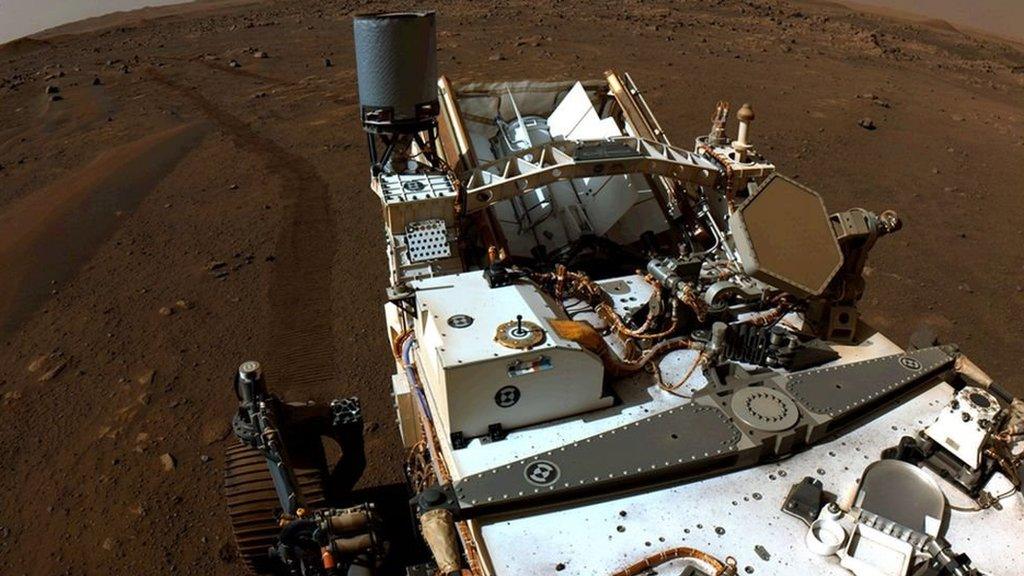Nasa's Perseverance rover ready to collect its first Mars sample
- Published
- comments

The rover has been on Mars since February
Has there ever been life on Mars? It's a question scientists have been asking for a very long time.
The Perseverance rover, which is operated by American space agency Nasa and landed on the Red Planet earlier this year, could play a big part in helping them find out.
The rover is preparing to take its first sample of rock from Mars. The core sample will be about the size of a finger and it'll be packaged in a sealed tube so it can eventually be returned to Earth.
Scientists say their best chance of working out whether Mars ever hosted life is to study its surface materials in sophisticated laboratories back here on Earth.
The Perseverance rover first landed on the Red Planet in February in a 45km-wide crater called Jezero. Satellite images suggest the crater could have once held a lake and scientists think Jezero could contain evidence of ancient life on Mars.
The Jezero crater is believed to have once been a lake
Since arriving on the Red Planet, the rover has driven about 1km south from where it touched down five months ago and it's now parked at a location known as the "Paver Stones", or "Fractured Rough" where a collection of pale-coloured rocks can be found.
The mission team working on the project believes the rocks could be the base or floor of the crater Jezero. They're now looking to find out whether these stones are sedimentary - which means they were created from the broken remains of other rocks and minerals that later joined together, or if they were once volcanic.
While both types of rock would be on interest to the scientists, they say volcanic rocks in particular can be dated with very high precision and accuracy in a lab.
Watch the moment the Nasa Perseverance rover landed on Mars
"That would really pin down the timing of many of the things we are looking at on Mars," chief scientist Ken Farley told reporters.
The Perseverance rover will first remove Mars' dust from the surface of a chosen section of the Paver Stones, before examining it with its powerful instruments.
The rover has already started to look for signs of life on the Red Planet
It's instruments can be held on the end of a two-metre long mechanical arm and they're very cleverly able to figure out the chemical make up, the different minerals and the texture within a rock.
In August later this year, the robot will collect it's very first sample of rock. In total, it's expected to collect around 40 over the course of its two-year mission.
- Published6 March 2021
- Published18 February 2021
- Published19 February 2021
